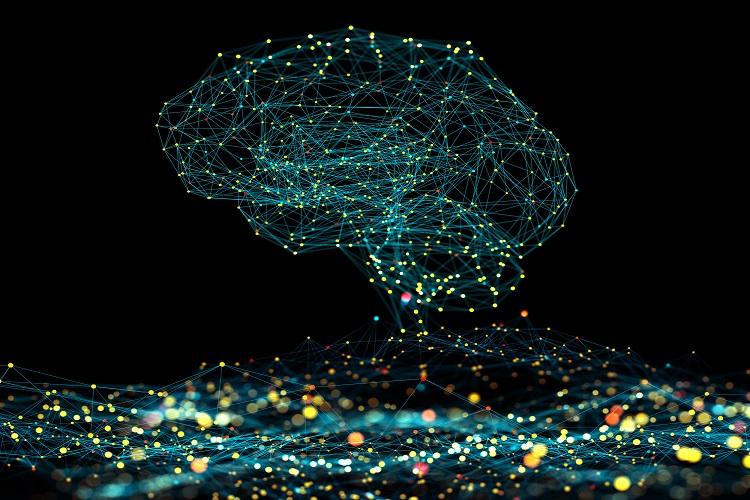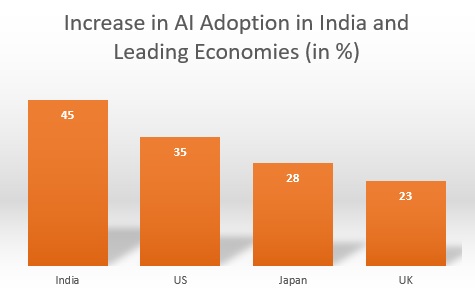
Most enterprises had to implement the remote working model almost instantaneously at an unprecedented scale during the pandemic. The crisis led to constant disruption, and the tectonic shift pushed businesses to adopt a more prolific approach for their hiring and talent development, which was relatively manual and slow to adopt automation and intelligent technology.
During the pandemic, it became almost impossible for organizations and IT leaders to hire promising talent with the traditional approach of multiple rounds of in-person interviews and assessments. While many companies had started experimenting with AI-based recruitment tools, it never took off in a big way.
As the economic outlook improves and digital transformation takes center stage, organizations are looking for new counter forces to thrive in the new normal. For a growing number of organizations, accessing the best-qualified talent in the shortest period is the critical ingredient for success.
The talent leaders and CIOs are working closely to build and implement effective AI-driven workforce management solutions to reduce the months of the entire hiring process for a specific role to a week or two. The collaboration is helping many enterprises get precious data-driven insights to make machine-driven innovations in talent hiring and development methodologies to attract future workforce.

Figure: Percentage of Organizations that have Increased AI Use due to COVID-19
Source: PwC Analysis
Growing focus on innovative hiring
There has been a greater realization that organizations can generate tremendous benefits and improve their bottom lines by leveraging the power of data processing. Companies across all sizes and scales are in serious deliberations with their technology leaders to leverage the new-age technologies in an improved way to optimize their recruitment process, improving candidate experience, and hire exceptional talent.
Over the last couple of years, AI and ML-based platforms have seen vast improvements in training algorithms and incorporating pre-skilled models. According to a survey by Gartner, 23% of organizations that were already piloting or leveraging AI were doing so in the HR and recruiting domain. "Often, organizations demonstrate the use of AI in the HR domain after showing value in other business areas. In the human capital management domain, AI applications dominate in employee- and candidate-facing situations," the survey notes.
Talent sourcing: Finding the right talent from a large pool of applicants is a highly complex process that can take many precious hours of recruitment teams'. Leveraging data-led insights and pattern matching algorithms, enterprises with a very high volume of candidates or hiring specialists can save much time and manual effort. These deep-tech models can provide quick and relevant insights in scanning thousands of resumes and ensuring that the shortlisted ones are closer to the job profile. Not only do these tools reduce time to hire, but they also free up a considerable amount of time for recruitment staff to focus on more meaningful tasks such as building relationships with new employees and enhancing their experience. The predictive analytics-based AI models can also envisage outcomes such as the likely tenure in the organization or the probability of accepting an offer letter.
Social media screening: AI-social media screening and monitoring tools enable enterprises to scan public profiles of prospective candidates to analyze their thought processes, interests, and attitudes – something that would otherwise take staggering workforce efforts.
According to CareerBuilder, a global human capital solutions company, seventy percent of employers use social networking sites to examine job candidates. And that review matters: Of those that do social research, 57% have found content that caused them not to hire candidates.
By leveraging AI and ML technology, HR teams can identify specific keywords, objectionable language that helps them decide to pursue a target candidate or not for an opportunity.
Virtual chatbots: A greater focus is also on deploying virtual assistants or chatbots to interact with prospective candidates, answer FAQs, conduct their internal assessment, and schedule a final interview appointment with the candidates. These tools are a catalyst to conduct market analysis, skill mapping and create candidate ranking on the relevant hiring parameters defined by the organization. AI-powered virtual chatbots provide a gamut of benefits that enhance a candidate's overall experience and reduce the unnecessary load on the talent managers.
Analyzing video-based interviews: By integrating AI with facial recognition, many tech leaders are experimenting with detailed analysis while interviewing them. These software tools enable HR teams to examine the facial expression when a specific question, such as about his job history, is asked. Along with that, these automated tools also provide a detailed overview of candidate's body language and communication skills, which are otherwise hard to judge in a remote workplace hiring.
Employee onboarding and training: This is one of the significant challenges many IT heads, and recruitment teams face in the hybrid workplace scenario. Providing necessary training and onboarding new employees, especially fresh graduates, requires much effort in a digital-only environment. These AI-powered chatbots enable new employees to quickly get all answers to their queries, making them feel comfortable in the contemporary workplace environment. In addition, customized learning programs can be delivered to different employees tailored to their roles by harnessing a massive amount of data and advanced algorithms.
Overcoming the dangers of bias
One of AI's many advantages is providing end-to-end visibility into the entire hiring and people training roadmap components. However, if you don't have an illustrative data set or an insight-led approach specific to your business needs, these cognitive solutions would not be able to deliver the results you aim at.
While data, considered the new lifeblood of organizations, has been recognized for this massive transformation, it is equally valid that even today, only a few enterprises have exploited this asset efficiently. It takes an enormous amount of relevant data to achieve the desired outcomes of any AI implementation initiative.
For many years, before the pandemic, the core leadership of most organizations was wary that AI and ML-based algorithms could never replace human assessment skills and sensitivity. Moreover, in its early days, cases of algorithm bias put a serious question mark on the efficacy of such automated tools.
Especially in the IT sector, which is already battling a lack of gender diversity, unplanned AI hiring implementations could carry the same biases prevalent in the industry for ages. A 2018 story by Reuters revealed that Amazon had to scrap an AI-based recruitment tool because the new system could not function in a gender-neutral way. The tool was reportedly was downgrading resumes that included words such as women's or women's chess club captain.
The reason could be Amazon's historical and legacy data on which the AI system was based and the rigid filters in the AI software that the machine was constantly learning. Much improvement has been made in AI systems, with concepts such as Contextual AI helping enterprise talent teams to get a more detailed understanding of people and customize ML patterns.
Nevertheless, HR should partner with internally trained data scientists or external specialists who can oversee the entire initiative to ensure a solid AI recruitment strategy to avoid such embarrassments and the prospects of machines learning unconscious bias. It is critical to test and identify which part of the recruitment process can be automated according to organizational competency and the actual need.
The HR team and IT leaders need to pay close attention to bringing objective intelligence and uniformity rather than having over-dependence upon software-based tools.

 In
In
Add new comment